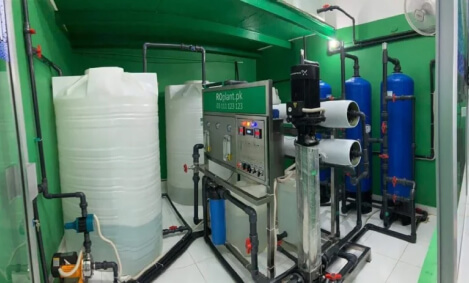
RO, Desalination And Waste Water Treatment Plants
Community RO plants
Domestic RO plants
Welfare RO plants
Seawater desalination plants
Truck-mounted mobile RO plants
Ultra-filtration plants
Swimming pool filtration plant
Solar powered RO plants
RO plants for Irrigation of barren lands
Hundreds of water shop plants
Irrigation plants
Floating in the ocean and desalination of seawater RO plants
Housing societies RO plants
Waste water treatment plants

Electrical Resistivity Survey (E.R.S)
Electrical resistivity of the soil can be considered as a proxy for the spatial and temporal variability of many other soil physical properties (i.e. structure, water content, or fluid composition). Because the method is non-destructive and very sensitive, it offers a very attractive tool for describing the subsurface properties without digging. It has been already applied in various contexts like: groundwater exploration, landfill and solute transfer delineation, agronomical management by identifying areas of excessive compaction or soil horizon thickness and bedrock depth, and at least assessing the soil hydrological properties. The surveys, depending on the areas heterogeneities can be performed in one-, two- or three-dimensions and also at different scales resolution from the cent metric scale to the regional scale. In this review, based on many electrical resistivity surveys, we expose the theory and the basic principles of the method, we overview the variation of electrical resistivity as a function of soil properties, we listed the main electrical device to performed one-, two- or three-dimensional surveys, and explain the basic principles of the data interpretation. At least, we discuss the main advantages and limits of the method.

Drilling And Boring Related Services
Conceptual modeling/ water budgeting
Domestic Drilling
Industrial Drilling
DEWATERING WELLS/ PIEZOMETERS
Injection wells
Long/step pump test
Rehabilitation of wells
Aquifer modeling/estimation
Packer/ yield test
Video logging
THE STORY
Civil Issues

-
-
-
-
- 🔥Thousands of deaths by heatstroke.
- 🔥Public protests in different areas due to lack of drinking water.
- 🔥Transfer of national treasure abroad by foreign brands of drinking water.
-
-
-
In addition to above problems, there was the issues of difficulties in starting new businesses, unusable seawater/groundwater.

 To achieve this goal, ROplant.pk planned to set up a network of large-scale water shops. Due to 2014’s situation, the Edhi foundation had dug graves in advance in 2015 while government institutions, including welfare NGOs had set up water stations (Sibeel) in various places of cities to save people from dying from the heatstroke. Not only that, but in 2014, people from all parts of Karachi took to the streets in protest to get drinking water. Vandalism and protests continued in various places. They were facing shortage of drinking water. People could live for many days without taking a bath, but they could not survive a single day due to lack of drinking water in the scorching heat. Despite this, nothing has been done at the government level in the last five years to address the shortage of drinking water in Karachi. But since ROplant.pk water shops opened in 2015, not only have there been no deaths from heatstroke, but for the past five years, people have not been protesting on the streets for drinking water because they now have access to clean and healthy drinking water at a very low cost in their neighborhood.
To achieve this goal, ROplant.pk planned to set up a network of large-scale water shops. Due to 2014’s situation, the Edhi foundation had dug graves in advance in 2015 while government institutions, including welfare NGOs had set up water stations (Sibeel) in various places of cities to save people from dying from the heatstroke. Not only that, but in 2014, people from all parts of Karachi took to the streets in protest to get drinking water. Vandalism and protests continued in various places. They were facing shortage of drinking water. People could live for many days without taking a bath, but they could not survive a single day due to lack of drinking water in the scorching heat. Despite this, nothing has been done at the government level in the last five years to address the shortage of drinking water in Karachi. But since ROplant.pk water shops opened in 2015, not only have there been no deaths from heatstroke, but for the past five years, people have not been protesting on the streets for drinking water because they now have access to clean and healthy drinking water at a very low cost in their neighborhood.